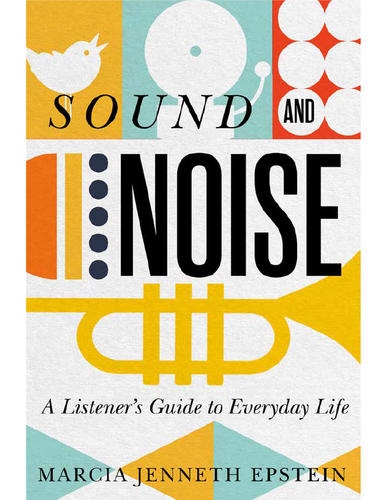Feb. 4, 2021
Dr. Marcia Jenneth Epstein Publishes Sound and Noise

Congratulations to Dr. Marcia Epstein on the publication of Sound and Noise: A Listener's Guide to Everyday Life (McGill-Queen's University Press). This interdisciplinary exploration of the impact of auditory stimuli on individuals and communities provides a detailed analysis of what everyday noise indicates about our culture and how it affects our minds and bodies. Dr. Epstein examines noise in multiple contexts by employing both scientific and sociological perspectives. This allowed her to consider noise from multiple viewpoints – as a threat to health and peace of mind, as a motivator for social harmony, as an effective form of communication, and as an expression of power. Sound and Noise draws on a large body of literature from fields such as nursing and neuroscience, sociology and sound studies, acoustic ecology and urban planning, engineering, anthropology, and musicology. Dr. Epstein also investigates the physical and cultural dimensions of music and speech. Ultimately, she advocates for an engaged dialogue of sound built upon a shared foundation of critical listening.
Dr. Epstein is an Assistant Professor in CMF, and teaches courses on acoustic communications and acoustic ecology, modernity, and rhetorical communication.
We caught up with Dr. Epstein in January and asked for some more information about her book:
What was the process like for planning the book's content and conducting research? How was a multidisciplinary research approach utilized?
“The path toward the book began with attending a conference in Banff on acoustic ecology, the interdisciplinary study of soundscapes and their influence on human and animal life and health. That conference, in 1995, was the foundation event for the World Forum for Acoustic Ecology (WFAE), and I found people curious about the same things that intrigued me – like how an intensely visual culture becomes more attentive to sound. Specific ideas for the book developed through attending local conferences on noise control techniques with acoustic engineers who analyze noise for industrial and architectural spaces. Learning their vocabulary and ways of listening expanded my musician-based listening skills and raised a lot of questions about the science of hearing. That led to auditing a course in the Psychology department on auditory perception and psychoacoustics, which provided a portal to the medical side of noise research. Another factor was the necessary technical focus of both fields – there was very little consideration of sound as a phenomenon requiring interdisciplinary approaches, and I realized that my book would need to follow that path.”
“Writing the text happened in fits-and-starts, mostly during summers and half-sabbaticals. When I started in 2011, there was very little peer-reviewed literature available outside of technical engineering and medical journals, which defined noise strictly as a problem: a realistic and necessary starting point, but the positive aspects of noise (cheering crowds, urban bustle, productive activities) weren't mentioned. As relevant journalistic and medical literature grew through the 2010s, I was finally able to verify some theories about areas such as auditory synesthesia, hyperacusis, and electromagnetic sensitivity, as well as bring in perspectives from environmental studies, soundscape studies, and music therapy. I had to make constant revisions to accommodate new discoveries, and kept moving – joyously – further and further into an interdisciplinary labyrinth.”
How does this book relate to the themes of previous research/works you've published?
“My background in musicology (music history, ethnomusicology, structural elements of musical form) and experience as a performer set up an initial series of questions: What qualities of sound attract and repel? What can musicians teach the general public about listening? How does sound, exclusive of linguistic content, convey information? The experience of co-teaching a course for the Faculty of Nursing on the uses of music therapy contributed to exploring both noise and music as related to states of physical and emotional health: How does the soundscape of industrialized cities affect health, and what populations are most vulnerable? How has the development of portable listening devices affected hearing acuity? My previous articles on acoustic ecology as an "interdiscipline" and on the role of hearing and auditory synesthesia in learning processes are directly related to themes in the book, as are years of teaching Acoustic Communications (COMS 491).”
Who would you recommend this book for, and any useful information for them to know before reading?
“The general public, academics, public health workers, teens, publishers, and researchers studying the sociology of sound.”
“Since the book is focused on knowledge transfer, the structure and tone of the writing are designed to strike a balance between utility to scholars in acoustic ecology and soundscape studies, and members of the general public interested in the science of what and how they hear, whether "hearing voices" internally is necessarily a sign of mental illness (it isn't), whether the kids' music will damage their hearing (it can), and what cities might sound like in the future. Along with scientific approaches, I have included examinations of the sociology and aesthetics of soundscapes – most notably the capitalist addiction to loudness as a means of attracting attention.”
“What readers should know is that general readers will be able to gather both information and recommendations without undue complexity, while researchers will benefit from extensive endnotes and bibliography.”
